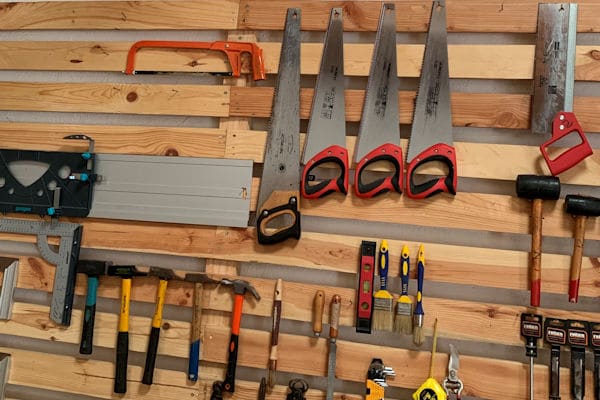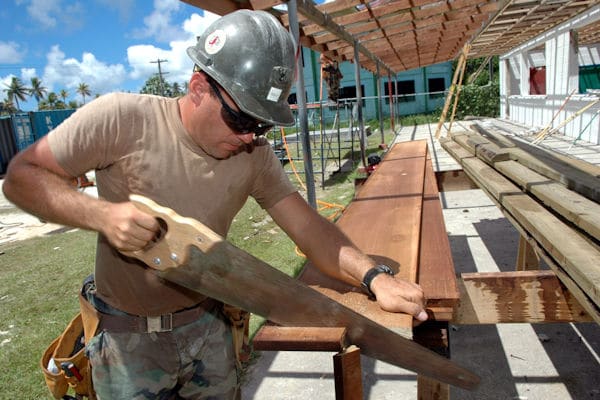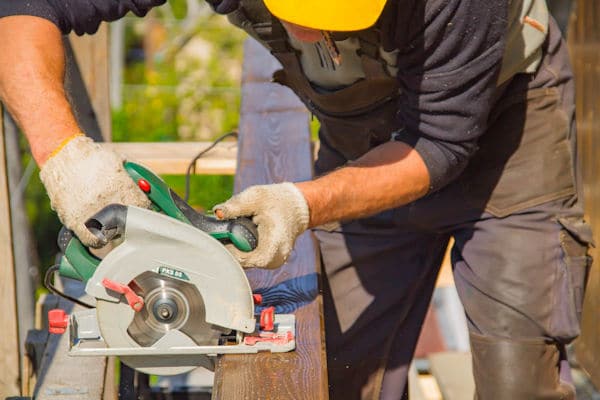 Saws have been used by woodworkers since ancient times. Today, the market has a wide range of saws that are used depending on the material and cuts needed. It is important to have insights on the type of saw you want to use.
Saws have been used by woodworkers since ancient times. Today, the market has a wide range of saws that are used depending on the material and cuts needed. It is important to have insights on the type of saw you want to use.
Woodworking projects cannot be complete without the need to use a saw. The type and number of teeth of a saw determine the purpose of the saw.
It is important to understand that saws do not cut wood pieces only. Some of the saws used can cut iron, metal, plastic, and other types of materials as well.
Saws used on wood are available in two different categories. The main difference between them is the type of blade they use and the application. These categories are; hand saws and power saws.
Hand Saws
Hand saws are the most popular kind of saws among woodworkers, especially the DIYers. They are used manually and are non-powered.
They are mostly used in joinery and carpentry. They feature long blades and a wooden handle for better grip.
1. Wood Handsaw
 The wood handsaw is a traditional and most basic saw. The wood handsaw is designed for cutting raw wood such as tree limbs. It can also be used for pre-cuts in wood pieces such as thin lumber. The blade of this saw is harder than the pieces it cuts and is also used to cut through fiberglass. This type of saw does not give the most accurate straight cuts. It is not suitable for more precise work.
The wood handsaw is a traditional and most basic saw. The wood handsaw is designed for cutting raw wood such as tree limbs. It can also be used for pre-cuts in wood pieces such as thin lumber. The blade of this saw is harder than the pieces it cuts and is also used to cut through fiberglass. This type of saw does not give the most accurate straight cuts. It is not suitable for more precise work.
2. Bow Saw
The bow saws feature a thin and rough blade attached to a metal frame. They have narrow blades which enable the cutting of a given material with ease. Bow saws have different types for cutting dry wood and greenwood. This type of saw is used to cut curved and straight wood. Bow saws are used for felling. It is due to how they cut through a tree and cross-cutting tree branches and firewood.
3. Hacksaw
A hacksaw features a small and fine-toothed blade. The blade of the saw is wide and thin, thus, easy positioning when making angled cuts. It has a C-frame that holds the blade under tension. The frame is flexible and adjustable enabling loosening or tightening of the blade. It is used to cut wood and any other harder materials than wood with efficiency. When cutting different materials, the blade is adjusted accordingly.
4. Backsaw
A backsaw has a reinforced narrow blade which gives extra leverage. It features a long blade and a cutting edge that has 10-20 teeth per inch. This type of saw has a thick spine for keeping the blade stable. It also provides support and control while sawing through thick wood pieces. Backsaws give you consistent, precise, and straight cuts. The most common applications are grooves or tendons, dovetails among others.
5. Coping Saw
Coping saws feature a narrow thin blade that is removable. The blade of this saw is attached to a metal frame using pins or clips. It comes in handy for unusual cuts, back-cut curves, intricate cuts, tight curves, and coped joints. It is a perfect tool for molding and light wood. The saw is commonly used by carpenters, plumbers, and toymakers.
Power Saws
Power saws are more advanced types of saws that use batteries or electricity to power up. They are more powerful than hand saws and can be used for larger and bigger projects.
1. Jigsaw
A jigsaw is a handheld power tool that is small and easy to use. Jigsaws are either corded or cordless. They come in different sizes, shapes, densities, and thicknesses. The speed used during cutting can also be adjusted accordingly. It is used for cutting straight and curved lines on a wood piece. With the reciprocating blade, it can also cut through other materials such as plywood, metal, and ceramic.
2. Circular Saw
 Circular saws are handheld power tools that are lightweight and portable. They feature a toothed blade with a diameter of up to 9 inches. Circular saws can also use hydraulic motors and gasoline as a power source. The saws can fit different blade types for making different cuts. The most common circular saw cuts are the combination cuts, crosscuts, and rip cuts. With this type of saw, you will have to manually push to cut through the required piece.
Circular saws are handheld power tools that are lightweight and portable. They feature a toothed blade with a diameter of up to 9 inches. Circular saws can also use hydraulic motors and gasoline as a power source. The saws can fit different blade types for making different cuts. The most common circular saw cuts are the combination cuts, crosscuts, and rip cuts. With this type of saw, you will have to manually push to cut through the required piece.
3. Miter Saw
A miter saw is an electric and stationary tool that is placed on a table or benchtop. It does not involve unnecessary movement during the cutting process. It features a circular blade that comes in 10″ or 12″ size. The blades are made of carbon steel and a coat for longevity and a great cutting experience. The circular blade is pulled down on the wood piece for making cuts. Miter saws are the best for their precise cuts and are suitable for perfectly fitting joints. The miter saws make normal cuts and compound angled cuts.
4. Table Saw
A table saw features a circular cutting blade that is fixed on a frame. This is a stationary power tool driven by a high-speed motor. There is a lever that helps to move the blade downwards to work on cutting the material. The material is held by a fixing mechanism located at the bottom of the frame.
Table saws are suitable for making rip-cuts, mitering, and crosscuts. They are also used for cutting identical pieces and straight lines. This is the ideal tool for making precise cuts and used on wooden pieces or surfaces. DIYers and professionals use the table saw where there is bulk lumber cutting.
Conclusion
Sawing plays a significant role in woodworking and DIY projects. Saws are used for different purposes depending on the requirements at hand. They are all beneficial and productive when chosen for the right task.
Getting to choose either the handsaws or the power saws depends on the needs and skills of the user. However, using any of the tools requires the woodworker to have a guide, insights, and take safety precautions while cutting through the wood pieces.